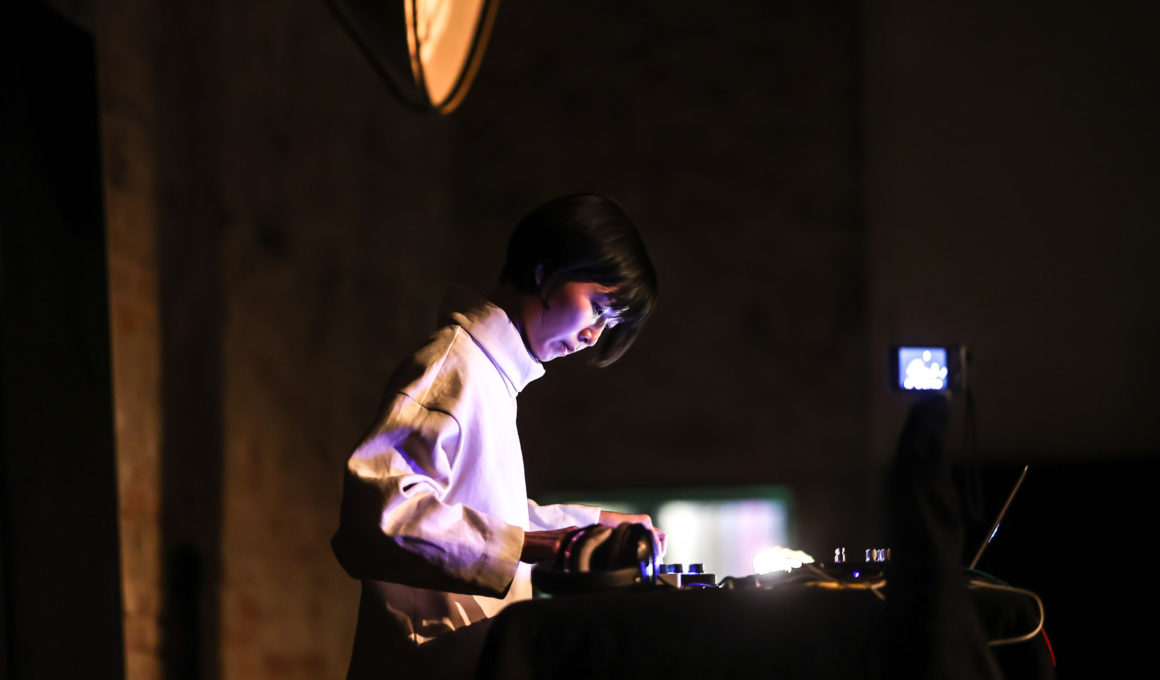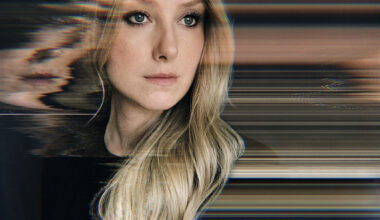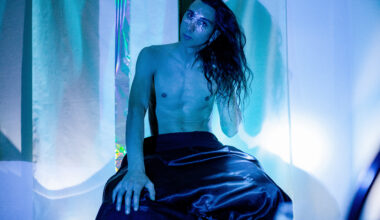Mei-Fang Liau is the Taiwan-born, Berlin-based musician and audio technologist behind Floating Spectrum. She creates intuitive and emotional compositions from a technically rigorous practice, coding her own custom generative music engines and software synthesizers. Using self-made tools such as Polyphylla, her fractal-based synthesizer inspired by patterns in nature, she is able to craft a wide range of intricate, organic computer-based sounds with subtlety and depth. Floating Spectrum was a performer at Kiezsalon in October 2020.
FACTS:
1: The Taiwanese government works with comedian writers to counteract disinformation.
2: I make my own soy yogurt and tempeh.
3: worldlandtrust.org is a good place to buy properties.
QUESTIONS:
1. What is the biggest inspiration for your music?
Rich drones from my sound generators or even from the surroundings (which could be anything: rain, river, engines, wind in the pipes, etc.). Drones are calming but also evocative. They are like mirrors that reflect different sides of my mind. Ideas often emerge when immersing myself in those rich sounds.
2. How and when did you get into making music?
The first time I saw a piano I fell in love with it and begged my mom to buy me one. When I was about 9 years old I got an electric one. I played by ear and wrote songs about nature or inspired by Ghibli’s anime film scores. I got into it in a deeper way much later after I left my first full-time job and gave myself more time to dream and finish songs.
3. What are 5 of your favourite albums of all time?
I don’t have all-time favourites as they change over the years, but here are some that came across my mind while writing:
Tim Hecker – Virgin
Midori Takada – From the Looking Glass
Broadcast – Color Me In
Laurie Spiegel – The Expanding Universe (especially the song with the same title)
Papa M – Live from a Shark Cage
4. What do you associate with Berlin?
Inspiring people and events, crowded lakes, solidarity, fusion asian food, smoky bars, dog poo.
5. What’s your favourite place in your town?
My home. Honestly it’s not the best flat: it doesn’t get much sunlight and there is no balcony. But home is the place I can deeply relax and be creative.
6. If there was no music in the world, what would you do instead?
Be a dog psychologist or study tropical plants.
7. What was the last record/music you bought?
‘Just Constellations’ by Roomful of Teeth, Michael Harrison.
8. Who would you most like to collaborate with?
I would love to create music for the amazing Taiwanese choreographer Lee-Chen Lin. Her work and her attitude to art creation are huge sources of inspiration for me. Here is a documentary about her work that’s really worth checking out.
9. What was your best gig (as performer or spectator)?
There are really tons of memorable shows, like the A/V show by Mercov and Geilfus, Greg Haines at Rote Salon, and Raimes at Atonal. But a very notable one was seeing 18th Dye at Gebäude 9 in Cologne many many years ago. In my very small music circle in Taiwan, we used to like their music very much. So when I arrived in Germany the first year, it felt like a dream to be able to see them perform live. I still remember the excitement when hearing them play my favorite song. I probably looked like a crazy person jumping around!
10. How important is technology to your creative process?
For me making music is in part an exploration process. Technology enables me to create unconventional sounds with rich dynamics. The surprises and beautiful discoveries coming from using software tools excite me and encourage me to dig further.
11. Do you have siblings and how do they feel about your career/art?
I have an older brother. We used to play lots of video games together as kids and it has influenced much of what I did later on. But our interests
Floating Spectrum’s music shimmers with elemental richness, as synths, meditative drones, and heavily processed samples evolve across layered environmental soundscapes. Her sonic journeys explore themes of growth, decay, and the contradictory place of humans within nature. The slow, explosive, and quietly emotive dance performances of Taiwan’s legendary choreographer Lee-Chen Lin are a key inspiration. The otherworldly generative visuals of her performance collaborator, the creative code artist Abe Pazos, reveal a similar fluent sensitivity to his digital tools. Together, these two artists guide audiences through a swirling audio-visual immersion in which human, nature, and technology are intimately and inseparably intwined.
Photo ©


